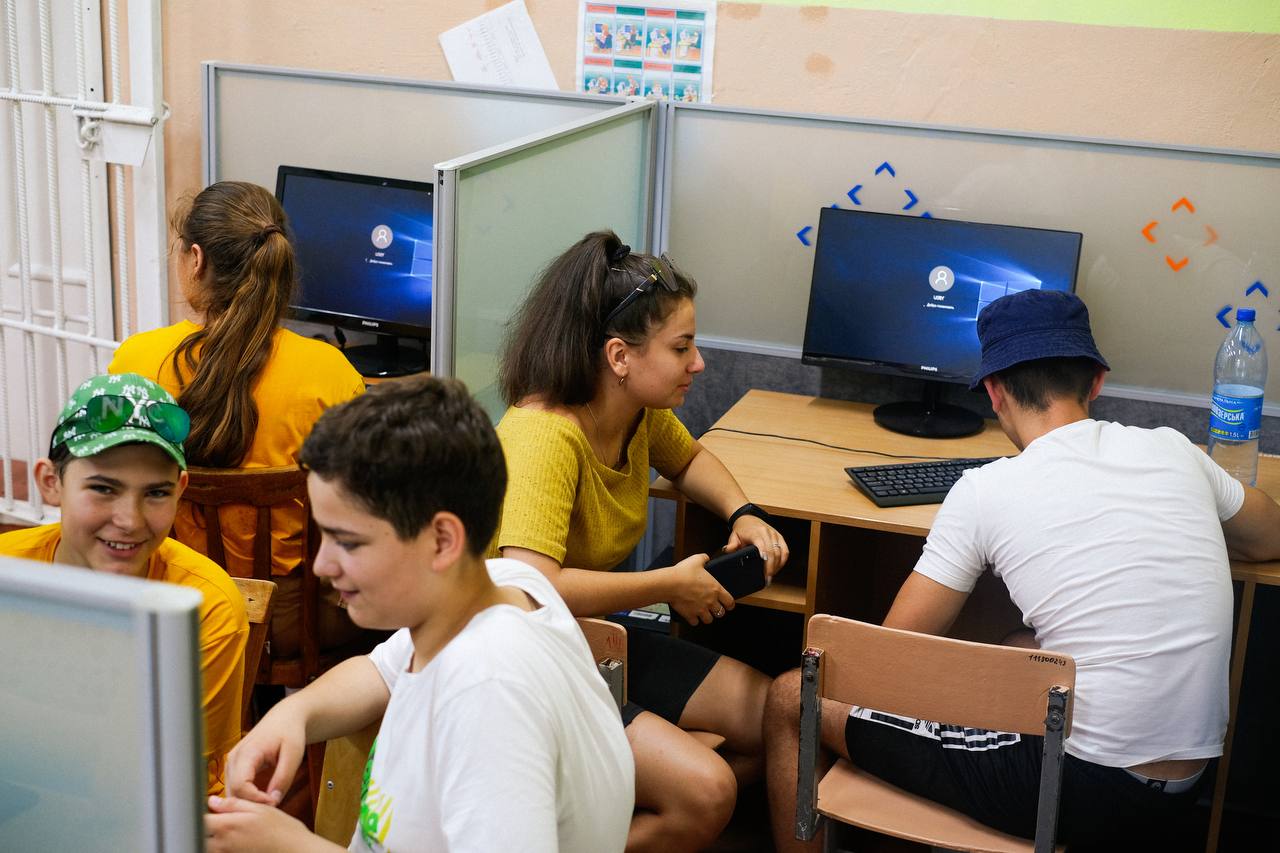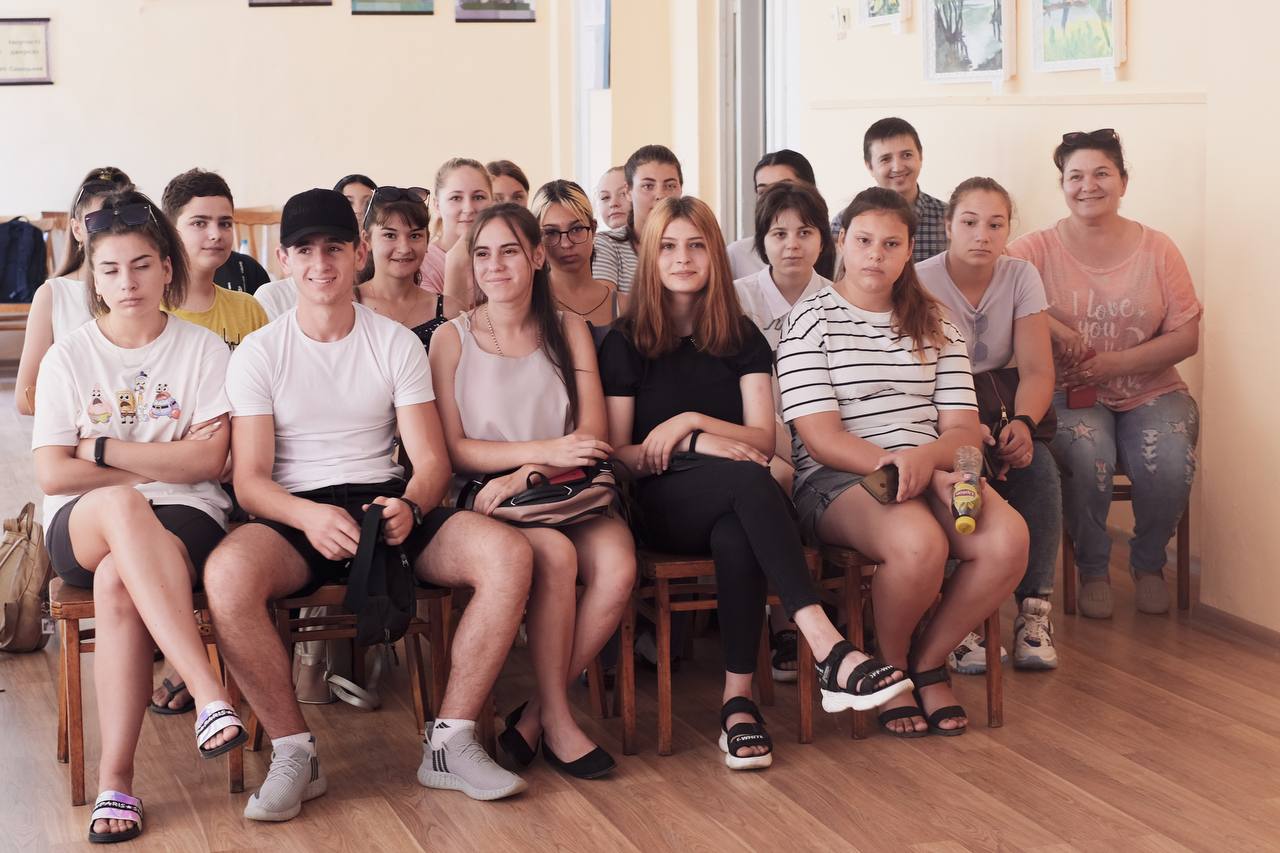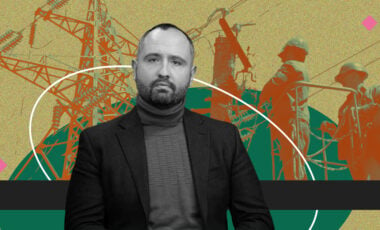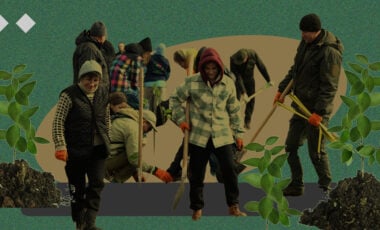Two days with IT: how a charity project teaches programming to children in rural schools
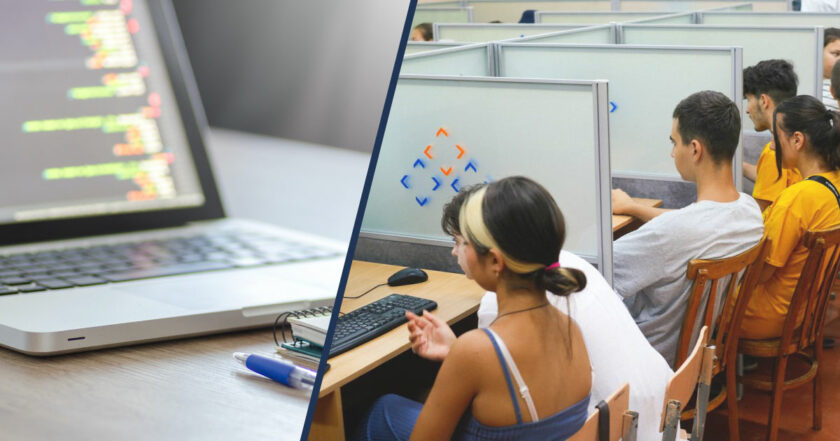
IT in Ukraine is an area that is actively developing and is increasingly chosen by applicants. Thus, according to the BRDO study "Analysis of IT education in universities in Ukraine," in 2024, the number of graduates of IT specialties will increase by 23% compared to 2020. According to the study, today universities graduate about 16 thousand bachelors, colleges and universities have about 6 thousand. However, the need for IT professionals reaches 30-50 thousand. The profession is in demand and relevant, but do schoolchildren know enough about it, especially those who live in villages?
Although most children have access to the Internet and the opportunity to learn about modern professions, there is a lack of practical training and communication with specialists in the villages. For students, this opportunity is important at least to understand the essence of the profession. At most, to delve into it and understand in practice what IT professionals do.
In the middle of summer, despite the break, schoolchildren from the village of Kubei in the Odesa region returned to acquiring knowledge. But not the one you can get in a regular school. Over the weekend, they didn't study biology or mathematics, but learned about IT, design and testing, and took their first steps in programming. It is for this purpose that IT-Chovnyk, a charitable educational project aimed at promoting the development of IT education, came to Kubei from Odesa. The initiator and one of the founders of the project, Kateryna Soloviova, describes its mission as follows: "I wanted to create a project that would fill us and the children and make sense."
A bright yellow logo, the same color T-shirt of lecturers and students, a lot of conversational videos, and live photos are the look of the IT-Chovnyk Instagram account. Words of gratitude and memories from schoolchildren in the publications marking the project. Someone admitted that they didn't expect anything interesting from IT, but "Chovnyk" convinced otherwise. Someone shared what they want to do in the field of IT. Someone just thanked them sincerely and asked them to come again.
Why does the village need IT?
To conduct educational classes, "Chovnyk" decided to visit the villages, rather than hold similar events in the regional center, Odesa. After all, villages are the settlements that, compared to cities, have a low level of knowledge about IT and fewer opportunities for development in this area. If the city family has no computer at home, the child can use it at school. In addition, the cities have more opportunities just from the surroundings and acquaintances. Kateryna says that it was important for them to choose the villages that need help. For example, if there are no computers in the school or they are too old to work. "It's one thing to come and talk, it's another thing to give children the equipment they can work on."
IT-Chovnyk also takes into account changes in education after the reform of the New Ukrainian School. Thus, from 2027, all institutions of complete general secondary education will be divided into the following levels: primary school (primary education), gymnasium (basic secondary education), and lyceum (specialized secondary education). And if the primary schools have to be close to the place of residence of the students, then the location of the lyceums will be determined by the regional administrations. It is unclear whether there will be a lyceum in the villages and whether the community will be able to maintain it. If not, then to further study IT in university, the child will have to enter a technical school or the nearest lyceum. However, says Kateryna, today in Ukraine there are no technical schools with a high level of IT education, but there are many courses. Therefore, another goal of IT-Chovnyk is "to inform children that it is possible to start studying IT not only in universities. You can start learning this right now while they are in school because there are a lot of resources for that today. Children should acquire mathematical knowledge at universities and be able to study technology courses taught by practitioners."
"Motivation is to give children knowledge"
IT-Chovnyk is aimed at acquainting children with IT education and its promotion in small towns. Its mission is to expand students' understanding of technical specialties and give a sense of what IT is. And to help those children who want to connect the future with this area. In rural schools, little is said about IT, so often the minds of children associate this area with complex mechanisms. "Chovnyk" proves something else: it's interesting, promising, and, if you understand, not so difficult.
"We wanted to show that there are real people and Chovnyk. When these children enter or dare to go study a technical major, they will know who to write to and who to ask. Where to enter, where it's better to study, which of our companies has a course that you can take and possibly get a job. I want the IT industry not to be completely closed to children like a vacuum. I want them to know who to turn to," says Kateryna.
The project was founded by representatives of the companies that are part of the cluster association Odesa IT-family: Andrii Silchuk, Ivan Kriakin, Kateryna Soloviova, Larysa Paslova, and Odesa IT-family. "Chovnyk" brought together representatives of IT companies, namely programmers, testers, designers, system administrators, marketing specialists, and top managers of companies. They came up with a name that shows self-irony. Large IT companies are called galleys. Kateryna explains that it's an incorrect name because it evokes associations with workers in galleys who are forced to work hard. In IT, on the other hand, the highest value is not customers or profits, but employees and the most comfortable conditions are created for them. It is about a variety of support and ample opportunities for growth, development, and recreation. That's why the project was ironically called "Chovnyk" ("little boat" in Ukrainian – TN):
"We decided to call our project 'Chovnyk' because it's the boat that will take students on board and go on their great voyage with them. Why Chovnyk? Because to get on a big ship, which is racing at full speed through the global IT industry, teenagers need a small boat that can bring them to the ship's ladder." Then they created a class schedule and went to implement a project: to give the school 15 computers and introduce children to the world of IT.
Each of the lecturers has considerable teaching experience; someone teaches in courses or schools, someone does at work. It's a common practice among IT professionals: sooner or later a professional joins the teaching. Kateryna herself has extensive experience in organizing educational events. But working with children is the first case in everyone's life. However, according to Kateryna, there were no difficulties with the new audience. It was fun and interesting for both teachers and students. "Everyone's motivation is to give children knowledge. This is our contribution to the future of children."
Kateryna says that the equipment for the project is provided by friendly IT companies. Due to the specifics of their work, they need to update their computers frequently, but they remain powerful enough to work in schools or universities for the next five years. Odesa IT-Family helps with the financial costs of travel, thus providing travel, food, and making a documentary about the trip. The cluster association also allocates funds for gifts to children, and its member companies donate their branded products.
"There is a third part of the costs: the time of the lecturers and the time of the team that organizes all the project activities, like marketing, PR, the legal part, organization and development of the curriculum. All this is not paid by anyone, we just do what we do because we consider the project important."
Behind the scenes of IT
On the night from Friday to Saturday, the team set up a computer class: they brought and installed 15 computers, set up a network connection, installed a network cabinet and partitions between the workplaces. On the first day, the lecturers conducted four theoretical classes. The first one talked about IT, what it is, what specialties exist within IT, and which of them are most in demand. It was here that the children expanded their understanding of the profession and understood why it is promising and interesting.
"We tried to explain what the opportunities are here and how children can use them. Maybe it was more important to us than showing how to make a website. We understood that it is impossible to teach to create a website in one lesson. Our main goal is to explain what IT is and what the possibilities in IT are, and also to give it a try, for them to feel what it is. We will do more in-depth learning later, continuing to work with the children after we leave."
The second lesson was devoted to acquaintance with testing and automation. On the third, they talked about programming, on the fourth, they discussed the UX/UI design of websites. To get to know each other outside of the lectures, the team gathered the children for a picnic in the evening. They talked about life and IT, competed in team competitions, fried kebabs, and fought with pillows, and it became clear that the next trips should start in this format.
The second day was devoted to practical classes. During three lessons on the example of a real IT case, children learned about website development. Kateryna says that it was extremely important for the team to show the process of creating a website on a specific product. They created a website for the village of Kubei in advance, drew a design, and made a frontend. Having an example of a site in front of them, children were able to look inside and learn how the frontend and design are made at lessons. Someone tried to write a piece of their code, someone was more interested in creating content for the site like writing texts and taking photos. The second day ended with a photoshoot in folk costumes.
The result is a choice of profession and a new format
Kateryna says that the level of children's knowledge about IT was low. "When we first let children into computers, half had no mail. There was also no understanding of what IT is." In the first lesson, only two students raised their hands to the question "Who wants to be a programmer? Who cares about programming and testing?" Everyone agreed to the offer to take photos, which wasn't part of the IT-Chovnyk program. However, at the end of the second day, there were many more people interested in learning programming. After the lectures and practical work, the students made sure on their own: IT is not so difficult and it is clear in the presence of examples and interesting lecturers.
Even though working on an educational project for children is the first experience for the entire team, it didn't cause any difficulties. On the contrary, everything contributed to a good result: the children were interested, the school and village administration with volunteers actively helped, and the team received inspiration for further trips. "What we're proud of and what we liked is that there were no difficulties. There's a clear indication that you're doing everything right and going the right way; when you have no obstacles. There weren't any, everything was easy. Chovnyk launched, gathered a team, went and did it."
The team is currently planning its next trip but is still communicating with students from Kubei. The children initiated three more online meetings with the lecturers. That's how the For Life format came about, which combines conversations about IT, life, and a personal career path. Kateryna says that after "IT-Chovnyk" some students of 10-11 grades plan to go work in testing or design, having a knack for it.
It's impossible to teach children IT in two days. But in two days it's possible to inspire them, allow them to touch the previously unknown world of programming, write the code, or look behind the scenes of a website. Those students who perceived IT as too complex a profession yesterday now think differently. Others are ready to build an IT career with someone to turn to for advice and inspiration. And the Chovnyk team plans the next trips and confidently takes the vector for spreading IT knowledge among schoolchildren of the Odesa region.


